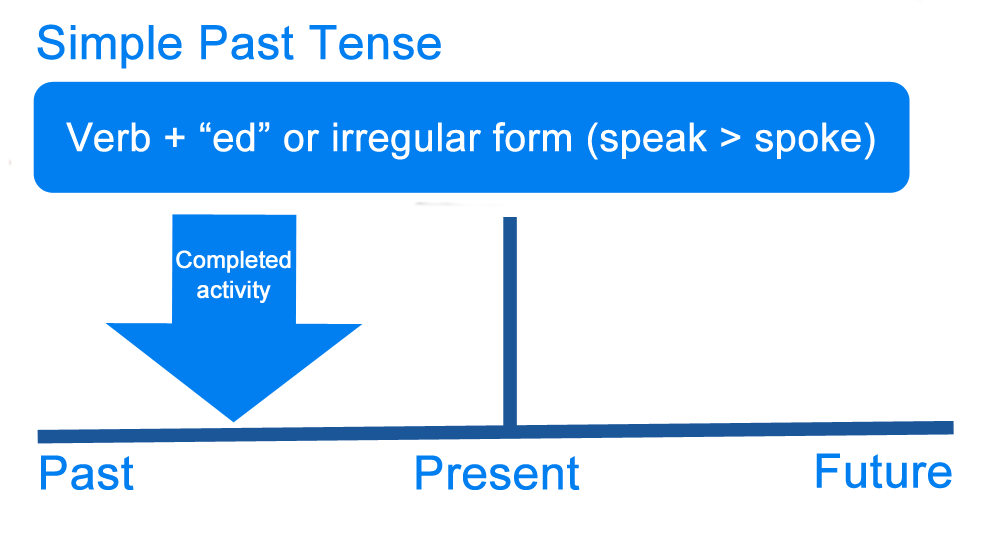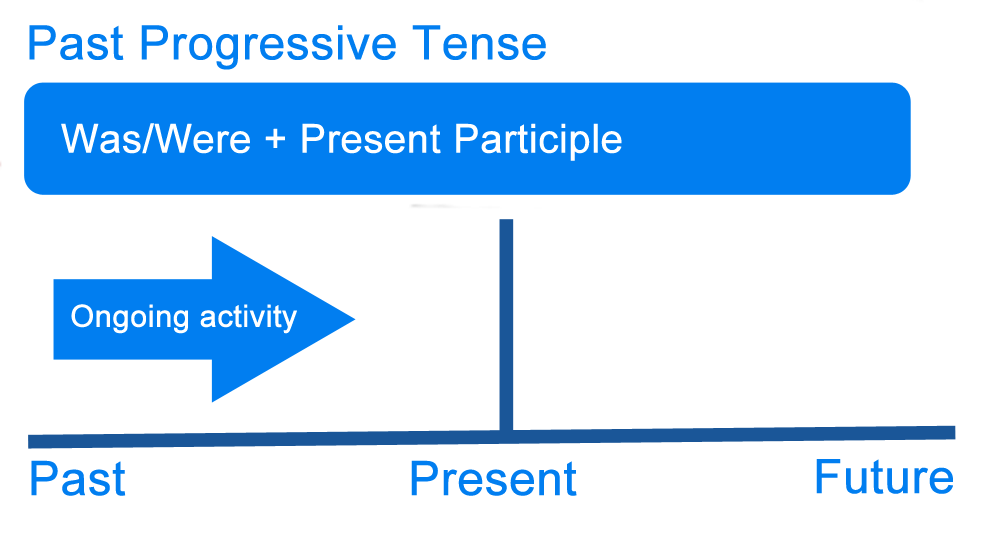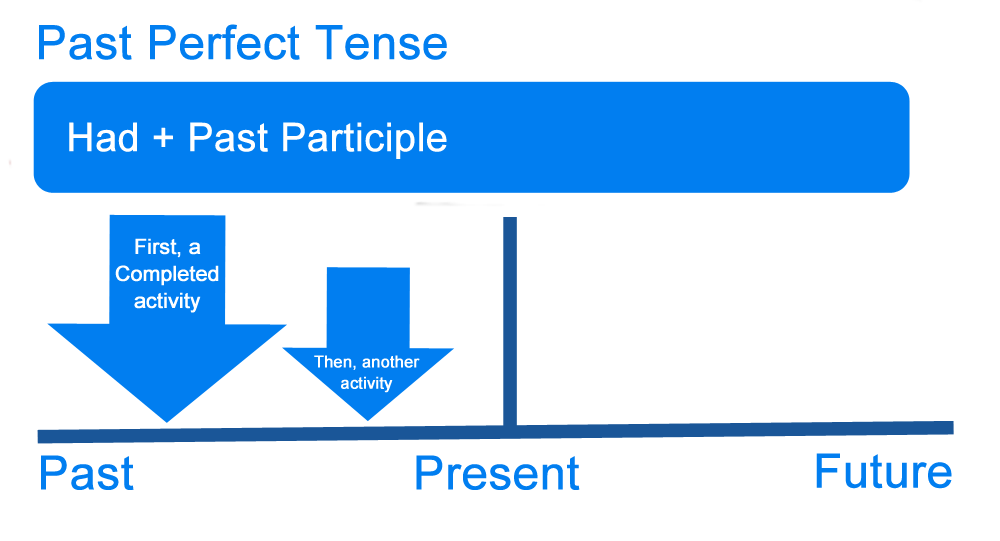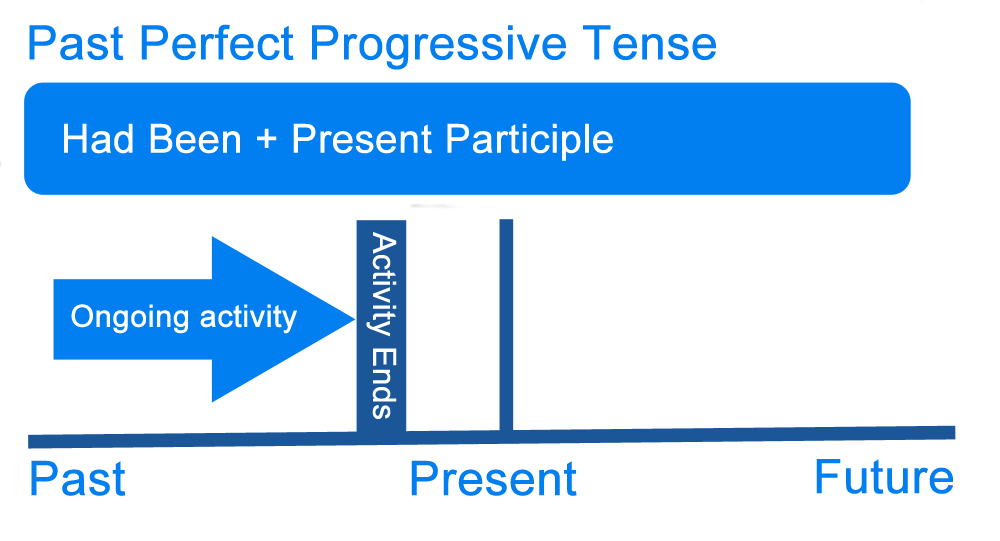Past tense definition: The past tense is an English tense that expresses a form a verb for events that have occurred.
What is Past Tense in English?
What does past tense mean? The past tense of verbs expresses events or actions that already occurred. These actions are finite in that they have both a starting and a stopping point.
Past Tense Forms
There are four forms of the past tense. They include:
- simple past
- I worked.
- past progressive
- I was working.
- past perfect
- I had worked.
- past perfect progressive
- I had been working.
More on each of these forms below.
Four Types of Past Tense
What is a past tense verb? Here are the four past tenses in English. We have definitions and examples of each so you can learn past tense.
What is the Simple Past Tense?
What does simple past mean? The simple past tense is used for actions that started and ended at a specific point in time. It is formed by adding “-ed” to the infinitive form of the verb.

For most verbs in English, you simply add “-ed” to the end of a verb to form the past tense.
Simple Past Examples:
- Verb: to mail
- Past: mailed
- Example: I mailed the letter yesterday.
- Verb: to ask
- Past: asked
- Example: You asked me to finish the chores.
- Verb: to change
- Past: changed
- Example: U.S. stocks were little changed after the Federal Reserve held short-term interest rates steady, as expected Wednesday. –The Wall Street Journal
Some regular verbs with short vowel sounds require adding an extra consonant to the end of the infinitive before adding “-ed.”
Example:
- Verb: to snag
- Past: snagged
- Verb: to drag
- Past: dragged
- Example: Property lenders saw an aggregate decline in volume of 30%, which dragged business lending down. We think uncertainty in the UK property market caused by Brexit drove the decline. –Business Insider
A verb with a silent “e” at the end just requires a “-d” to create past tense.
Example:
- Verb: to retire
- Past: retired
Irregular verbs take various forms in the past tense. One example follows.
Example:
- Verb: to sing
- Past: sang
What is the Past Progressive Tense?
What does past progressive mean? The past progressive tense expresses events that lasted for a duration of time in the past.

To form the past progressive:
- Subject + was/were + present participle (and “-ing” to end of the verb)
The past progressive is used to express:
- duration
- I was working.
- interrupted actions in progress
- I was working when he called.
- actions happening at the same time
- I was listening to music while I was working.
- polite question
- I was wondering if you could help me.
What is the Past Perfect Tense?
What does past perfect mean? The past perfect tense most often expresses actions in the past that finished before another action (also in the past) started.

To form the past perfect:
- Subject + had + past participle of verb
The past perfect is used to express:
- completed action before another begins (both in past)
- After he had answered the question, he was able to complete his assignment.
- conditional statements
- If we had asked a question, we would have been able to complete the assignment.
- reported speech
- The teacher asked if I had completed the assignment.
- show dissatisfaction with the past
- I wish I had completed the assignment.
What is the Past Perfect Progressive Tense?
What does past perfect progressive mean? The past perfect progressive tense most often expresses actions in the past that were in progress before other actions.

To form the past perfect progressive:
- Subject + had been + present participle (and “-ing” to end of the verb)
The past perfect progressive is used to express:
- Duration of a past action (only up to a certain end point)
- The car had been running for ten minutes before we left.
- Showing cause of an action
- We could not play outside because it had been raining.
- Conditional statements
- If the sun had been shining, we could have played outside.
- Reported speech
- She said it had been raining.
Past Tense of To Be
Since the verb to be is an irregular verb, it can be confusing to sort it out through its various tenses. Here is a brief outline.
To Be Conjugations:
- Past > Was, Were
- Present > Is, Am, Are
- Future > Will Be
To answer a few specific questions about the verb be in the past tense,
Is Was Past Tense?
- Yes, was is the first person and third person past form of to be.
What is the Past Tense of Is?
- See above. Is is the present tense of to be. The past form is was.
What is the Past Tense of Be?
- See above. The past form of the verb be is was and were.
Other English Tenses
 The above examples covered all of the various kinds of past tense verbs. English also has a present tense and a future tense.
The above examples covered all of the various kinds of past tense verbs. English also has a present tense and a future tense.
What is the Present Tense?
What does present tense mean? In general, the present tense is used to express facts, habits (habitual actions), beliefs, or general truths.
- Erik rides his bike every day.
- Exercising is a benefit to your health.
What is the Future Tense?
What does future tense mean? The future tense expresses actions that will occur at a future date.
- Erik will ride his bike on Monday.
- Exercising will benefit your health.
Summary: What is the Past Tense?
Define past tense: In grammar, the definition of past tense is a tense that signals an action or event that occurred in the past.
There are four main forms of the past tense. They include:
- simple past
- I worked.
- past progressive
- I was working.
- past perfect
- I had worked.
- past perfect progressive
- I had been working.
In summary, the past tense:
- is used to express actions that have occurred at some time before the present
- has four forms including: simple, past perfect, past progressive, and past perfect progressive
Contents
